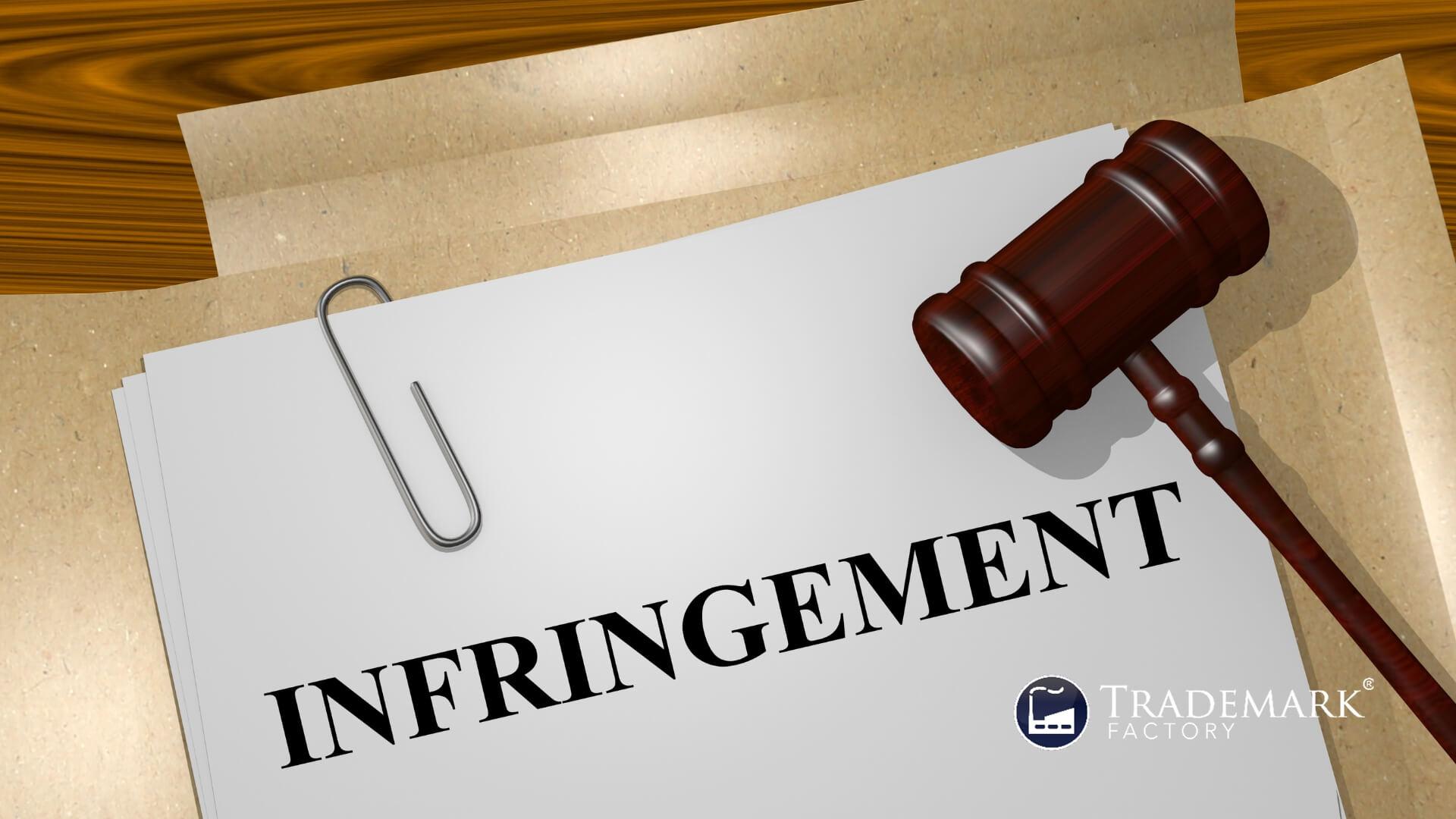Path to Protection Federal Trademark Registration Demystified

This article titled "Path to Protection: Federal Trademark Registration Demystified" aims to provide a comprehensive analysis of the process and benefits of federal trademark registration process for startups. The article explores the distinction between common law trademark rights and federal trademark law protections, delves into the intricacies of navigating the United States Patent and Trademark Office (USPTO) application process, and offers insights on conducting a thorough types of trademark search prior to filing for federal registration. Additionally, it addresses key considerations such as responding to office actions and oppositions during the registration process, maintaining and renewing registrations for long-term protection, understanding associated costs and fees, as well as risks and remedies related to trademark infringement for startups lacking federal registration.
Key Takeaways

- Federal trademark registration provides exclusive rights to use the registered mark nationwide and a presumption of validity and ownership.
- Federal trademark law essentials for startups protections offer stronger enforcement options and broader scope compared to common law trademark rights.
- Navigating the USPTO application process requires the preparation of specific forms and documents, conducting a thorough trademark search, and considering working with experienced trademark attorneys.
- Federal trademark registration provides enhanced legal protections, increased market credibility, and benefits for international expansion and protection in foreign markets, but also involves a lengthy process and ongoing maintenance requirements.
Understanding the Basics of Federal Trademark Registration for Startups
 The basics of federal trademark registration for startups involve understanding the legal requirements and procedures necessary to obtain national recognition and protection for their trademarks. This process holds significant importance for startups, as it provides numerous benefits such as exclusive rights to use the registered mark nationwide, a presumption of validity and ownership, and the ability to bring forth legal action against infringing parties. To begin the process, startups must ensure their eligibility by meeting specific criteria outlined by the United States Patent and Trademark Office (USPTO). Understanding these steps is crucial before comparing common law trademark rights with federal trademark protections.
The basics of federal trademark registration for startups involve understanding the legal requirements and procedures necessary to obtain national recognition and protection for their trademarks. This process holds significant importance for startups, as it provides numerous benefits such as exclusive rights to use the registered mark nationwide, a presumption of validity and ownership, and the ability to bring forth legal action against infringing parties. To begin the process, startups must ensure their eligibility by meeting specific criteria outlined by the United States Patent and Trademark Office (USPTO). Understanding these steps is crucial before comparing common law trademark rights with federal trademark protections.
Comparing Common Law Trademark Rights and Federal Trademark Protections
 Comparing common law trademark rights and federal trademark protections reveals the contrasting legal frameworks that govern their scope and enforcement. Common law rights arise from actual use of a mark in commerce, while federal protection is obtained through registration with the United States Patent and Trademark Office (USPTO). Common law rights are limited to specific geographic areas, whereas federal registration provides nationwide coverage. Federal trademark protections offer comprehensive advantages such as stronger enforcement options and broader scope of protection. Transitioning into navigating the USPTO application process involves understanding the steps involved.
Comparing common law trademark rights and federal trademark protections reveals the contrasting legal frameworks that govern their scope and enforcement. Common law rights arise from actual use of a mark in commerce, while federal protection is obtained through registration with the United States Patent and Trademark Office (USPTO). Common law rights are limited to specific geographic areas, whereas federal registration provides nationwide coverage. Federal trademark protections offer comprehensive advantages such as stronger enforcement options and broader scope of protection. Transitioning into navigating the USPTO application process involves understanding the steps involved.
Navigating the United States Patent and Trademark Office (USPTO) Application Process

Navigating through the United States Patent and Trademark Office (USPTO) application process requires a clear understanding of the required forms and documents involved. Applicants must carefully prepare their application documentation, including the proper forms, specimens, and fees. The registration timeline can vary depending on factors such as the complexity of the mark and any potential oppositions. Before submitting an application, conducting a thorough trademark search is crucial to ensure availability. Many applicants choose to work with experienced trademark attorneys to navigate this complex process efficiently. Understanding the USPTO application process sets the foundation for exploring the benefits of federal trademark registration for new businesses.
Benefits of Federal Trademark Registration for New Businesses

Enhanced legal protections offered by federal registration provide new businesses with a solid framework to establish and protect their brand identity. The advantages of federal trademark registration include increased market credibility and deterrence against infringement. However, there are also disadvantages such as the lengthy process and timeline, as well as the legal requirements that must be met. Additionally, federal registration offers benefits for international expansion by providing protection in foreign markets. It is crucial for businesses to monitor their trademarks to ensure continued protection. Moving forward, understanding how to conduct a trademark search before filing for federal registration is essential in securing brand exclusivity.
How to Conduct a Trademark Search Before Filing for Federal Registration

Conducting a comprehensive trademark search prior to initiating the federal registration process is crucial for ensuring brand exclusivity and minimizing the risk of encountering conflicting trademarks. To conduct a thorough search, businesses can follow these steps:
1. Start with preliminary research to identify potential conflicts.
2. Utilize online search tools such as the USPTO's Trademark Electronic Search System (TESS).
3. Analyze the search results by considering similarities in marks, goods/services, and existing registrations.
4. Seek guidance from a trademark professional to interpret complex search results accurately.
Understanding how to conduct a comprehensive trademark search sets the foundation for successful federal registration without relying solely on attorneys.
The Role of Trademark Attorneys in the Federal Registration Process

Trademark attorneys play a crucial role in the federal registration process due to their legal expertise. They assist with trademark clearance by conducting thorough searches to ensure the proposed mark does not infringe on existing trademarks. Attorneys also handle drafting and filing applications, guiding applicants through the registration process, and providing expert advice on post-registration matters. Understanding their role is essential before proceeding to responding to office actions and oppositions during federal trademark registration.
Responding to Office Actions and Oppositions During Federal Trademark Registration

Crafting well-reasoned and persuasive responses to office actions and oppositions is a critical step in navigating the federal trademark registration process. To address this, here are four key strategies to consider:
1. Identifying common objections raised by the USPTO during the examination process.
2. Developing effective approaches to overcome refusals and objections.
3. Ensuring compliance with legal requirements when responding to office actions.
4. Employing effective communication and negotiation strategies when faced with third-party oppositions.
Maintaining and Renewing Federal Trademark Registrations for Long-Term Protection

In order to ensure the continued validity and effectiveness of their intellectual property rights, businesses must adhere to ongoing maintenance and renewal requirements for their federal trademark registrations. Continuous maintenance is of utmost importance in protecting trademarks, especially for startups. By taking proactive steps to avoid abandonment risks, such as timely renewals and monitoring deadlines, businesses can safeguard their trademarks. Strategic considerations in renewal should also be taken into account, as it offers long-term benefits and strengthens brand protection. Understanding the costs and fees associated with federal trademark registration is essential for businesses seeking comprehensive protection.
Understanding the Costs and Fees Associated with Federal Trademark Registration

Understanding the financial obligations and expenses associated with securing and maintaining federal trademark registrations is crucial for businesses seeking to protect their intellectual property rights. To navigate this process effectively, it is important to consider the following:
1. Trademark application fees: Familiarize yourself with the costs involved in filing a federal trademark application, including government filing fees and attorney fees.
2. Cost saving tips: Explore strategies for reducing expenses, such as conducting a thorough search before applying to avoid potential conflicts that may result in additional costs.
3. Financial planning: Incorporate trademark registration expenses into your overall budgeting and financial planning to ensure adequate resources are allocated.
4. Fee breakdown: Understand the breakdown of fees associated with different stages of the registration process, including maintenance and renewal fees.
By being aware of these considerations, businesses can make informed decisions regarding their trademark registration journey. This understanding will enable them to protect their brand while also managing their financial resources efficiently.
Transitioning into the subsequent section about 'trademark infringement: risks and remedies for startups without federal registration', it is important for businesses to be aware of the potential risks they face if they choose not to pursue federal trademark registration.
Trademark Infringement: Risks and Remedies for Startups Without Federal Registration

This discussion will focus on the strategic decision-making process of balancing costs and benefits in federal registration, as well as the success stories of startups that have utilized federal trademark registration strategies. Strategic decision-making in federal registration involves carefully considering the financial implications and potential advantages of obtaining federal trademark protection. Through case studies, we will explore the various strategies employed by successful startups to navigate the complexities of federal registration and achieve trademark recognition.
Strategic Decision-Making: Balancing Costs and Benefits in Federal Registration
Strategic decision-making in federal registration involves careful evaluation and balancing of costs and benefits. To maximize the benefits of registration while minimizing costs, businesses should undertake a thorough cost analysis and risk assessment. This process includes weighing the financial investment required for registration against the potential advantages it brings, such as brand protection and increased market value. By considering these factors, businesses can make informed decisions that align with their goals and resources. In the following section, we will explore success stories through federal trademark registration strategies.
CASE STUDIES: SUCCESS STORIES THROUGH FEDERAL TRADEMARK REGISTRATION STRATEGIES

Case Studies: Success Stories Through Federal Trademark Registration Strategies
Case studies showcasing businesses that have achieved success through careful evaluation and balancing of costs and benefits in their federal trademark registration strategies provide valuable insights into effective decision-making. These success stories highlight the significance of market expansion strategies and overcoming legal hurdles through federal registration. By analyzing these case studies, businesses can learn from the experiences of others and make informed decisions regarding their own registration strategies. The following table presents key takeaways from selected case studies:
| Case Study | Market Success | Legal Hurdles | Expansion Strategies |
|------------|----------------|---------------|----------------------|
| Business A | Increased sales by 25% within a year after registration | Successfully defended against infringement claims | Entered new markets through online platforms |
| Business B | Expanded customer base globally with registered trademarks | Resolved potential conflicts with competitors through prior registrations | Established strategic partnerships for international growth |
| Business C | Achieved brand recognition and loyalty through consistent use of registered trademarks | Avoided costly litigation by proactively protecting intellectual property rights | Implemented licensing agreements to penetrate foreign markets |
These case studies demonstrate the positive impact of effective federal trademark registration strategies on market success, navigating legal challenges, and facilitating business expansion.
Frequently Asked Questions

Can I Use My Trademark Without Federal Registration?
Trademark owners may use their trademarks without federal registration, relying on common law protection. However, state trademark registration can provide additional rights and benefits. International trademark protection, trademark licensing, and trademark enforcement processes are also important considerations for trademark owners.
How Long Does the Federal Trademark Registration Process Typically Take?
The average processing time for federal trademark registration varies depending on several factors. These factors can include the complexity of the application, potential oppositions, and the workload of the examining attorney. Expedited registration options are available for an additional fee. Common delays in the registration process can occur due to incomplete or incorrect application information, office actions requiring clarification or amendment, or opposition proceedings. If registration is taking longer than expected, applicants can check the status of their application through the Trademark Electronic Application System (TEAS) and contact the United States Patent and Trademark Office (USPTO) for further assistance.
What Are the Potential Consequences of Trademark Infringement?
Potential consequences of trademark infringement include legal remedies, financial damages, reputation damage, injunctions and cease and desist orders, and loss of exclusive rights. Infringers may face lawsuits seeking compensation and court-ordered actions to stop the infringing activities.
Are There Any Exceptions or Limitations to Federal Trademark Protection?
Comparative analysis reveals that federal trademark protection is not absolute. Exceptions and limitations exist, such as fair use exceptions and trademark dilution cases. International trademark protection may differ, as well as the recognition of non-traditional trademarks.
Can I Register a Trademark That Is Similar to an Existing Registered Trademark?
In the context of similarity disputes in trademark registration, legal implications arise when attempting to register a trademark that is similar to an existing registered trademark. Establishing distinctiveness and navigating the clearance process are important factors in avoiding likelihood of confusion and understanding trademark dilution.
Conclusion

In conclusion, federal trademark registration is a crucial step for startups seeking long-term protection. By understanding the basics of this process and comparing it to common law rights, businesses can navigate the application process with the United States Patent and Trademark Office (USPTO). Conducting thorough trademark searches, responding to office actions and oppositions, and maintaining renewals are essential for maintaining federal registrations. While there are costs associated with registration, the benefits far outweigh the risks of trademark infringement for startups without federal protection.
Subscribe to Trademark Wednesdays, our weekly newsletter where we'll send fun and informative trademarking topics straight to your inbox.




